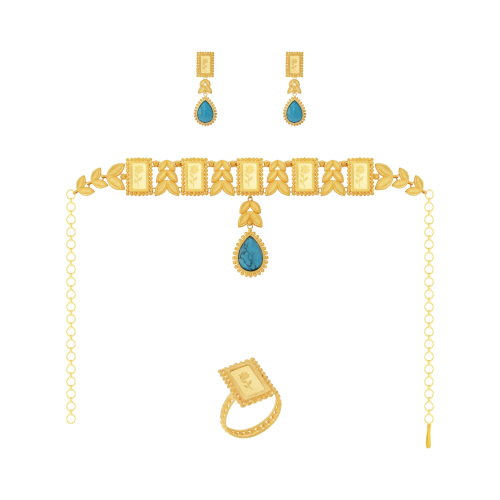The Lost 'Diamond Rivers' of Oman: Fact or Colonial Myth?

For centuries, tales of Oman's "diamond rivers" have captivated the imagination of traders, explorers, and fortune seekers. According to these accounts, streams in Oman's rugged interior carried precious diamonds that could be collected by those willing to brave the harsh landscape. But were these glittering waterways real geological phenomena, or merely colonial myths manufactured to justify exploration and exploitation? Let's examine the evidence and the historical context of these fascinating claims.
The Origins of the Diamond River Legend
The legend of Oman's diamond-bearing streams first gained prominence in European circles during the 16th and 17th centuries, coinciding with Portuguese and later British interest in the Arabian Peninsula. Early explorers and merchants reported hearing tales from local Omanis about valleys where diamonds could be found among river pebbles after seasonal rains.
These accounts became particularly entrenched in colonial literature after notable British officials in the region, including military officers and diplomatic representatives, began documenting these stories. The diamond rivers featured prominently in correspondence back to Europe, fueling interest in potential exploitation of Oman's mineral wealth.
Geological Reality Check
From a modern geological perspective, the existence of diamond-bearing rivers in Oman would be highly unusual. Diamonds typically form in specific geological conditions, usually in kimberlite pipes, which are vertical structures extending deep into the Earth's mantle where extreme pressure and temperature conditions exist.
Oman's geology is indeed remarkable, but in different ways. The country features rare exposures of oceanic crust and upper mantle rocks (ophiolites) that have been thrust onto the continental margin. While Oman boasts significant mineral resources, including copper, chromite, and other metals, the geological formations typical of diamond deposits are not significantly present.
Colonial Narratives and Resource Extraction
The persistence of diamond river narratives despite limited geological evidence raises questions about colonial motivations. Throughout the 18th and 19th centuries, European powers frequently employed resource-based justifications for extending influence over territories in Asia, Africa, and the Middle East.
These diamond rivers became powerful symbols in colonial literature, representing the untapped wealth of Arabia awaiting "discovery" and extraction by Western powers. Such narratives conveniently positioned European intervention as necessary to properly utilize resources that indigenous populations had supposedly failed to exploit effectively.
Local Omani Perspectives
Intriguingly, while colonial accounts emphasized diamond rivers, Omani historical documents and oral traditions tell a more nuanced story. Local accounts do mention valuable stones found in certain wadis (seasonal river valleys), but these references are typically more modest and focused on semi-precious stones rather than diamonds.
Traditional Omani knowledge recognized various mineral resources, including cornelian, agate, and quartz crystals, which do occur naturally in the region's waterways. These stones held cultural and economic significance without the exaggerated claims of diamond wealth that characterized colonial accounts.
Possible Origins of the Misidentification
Several factors may explain the persistence of diamond river myths:
- Genuine mineral finds: Quartz crystals, which can appear diamond-like to untrained observers, are found in some Omani wadis. These "false diamonds" may have sparked or reinforced the legends.
- Translation errors: Arabic terms for various clear crystals and gemstones may have been imprecisely translated as "diamonds" by early European visitors with limited linguistic expertise.
- Deliberate exaggeration: Colonial powers had clear incentives to magnify reports of valuable resources to justify territorial ambitions and secure funding for expeditions.
- Cultural misunderstanding: European explorers may have misinterpreted cultural references to the value of water itself in arid regions, where seasonal watercourses were indeed considered precious.
The Legacy of the Diamond River Myth
Whether based on misidentified minerals or colonial fabrication, the diamond river narrative had real consequences. It shaped how Oman was perceived by external powers and influenced early resource exploration in the region. British geological surveys conducted in the late 19th and early 20th centuries were partially motivated by these persistent stories, though they ultimately focused on other mineral resources once the diamond claims proved unsubstantiated.
The myth also became embedded in popular Western literature about Arabia, reinforcing orientalist tropes of exotic wealth and mystery. Even today, the image of diamond-filled streams occasionally resurfaces in travel literature about Oman, despite geological evidence to the contrary.
Contemporary Scientific Assessment
Modern geological surveys have thoroughly mapped Oman's mineral resources, and while the country possesses remarkable geological features worthy of scientific interest, diamond-bearing formations are not among them. The Sultanate's actual mineral wealth lies primarily in its copper deposits, chromite, limestone, and notably, its rich hydrocarbon resources.
Interestingly, Oman does feature unique geological formations like its ophiolites (exposed oceanic crust) that attract significant scientific study. These formations provide invaluable insights into Earth's geological processes but do not produce diamonds in the manner described in colonial accounts.
Myth with a Purpose
The tale of Oman's diamond rivers appears to be largely mythical, though possibly based on genuine finds of other minerals that were misidentified or deliberately exaggerated. The persistence of this narrative despite contrary evidence highlights how resource myths often served colonial agendas by providing justification for exploration and territorial control.
Yet these stories are not merely historical curiosities. They demonstrate how scientific knowledge and resource narratives have been shaped by political and economic incentives throughout history. The diamond river myth reveals as much about colonial ambitions and the Western imagination as it does about Oman's actual geological features.
Today, Oman embraces its genuine geological wonders, from the stunning Wahiba Sands to the Al Hajar mountains, without need for embellishment. The country's true geological treasures—its dramatic landscapes, fossil deposits, and mineral resources—continue to attract scientists and visitors alike, proving that reality can be just as fascinating as colonial myths, even without diamonds flowing through its wadis.
So while you won't find rivers of diamonds in modern Oman, you will discover a landscape rich with geological and cultural treasures that tell a far more interesting story than the colonial diamond myths ever could.

Our Promise
Fast shipping
Receive your jewelry in maximum 3 days.
Return guaranteed
Requesting a return is quick and easy.
Ethical Sourcing
Ethically Sourced Materials
Payments
Buy in the most convenient way for you.







